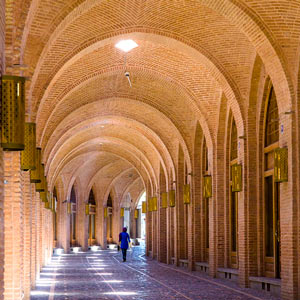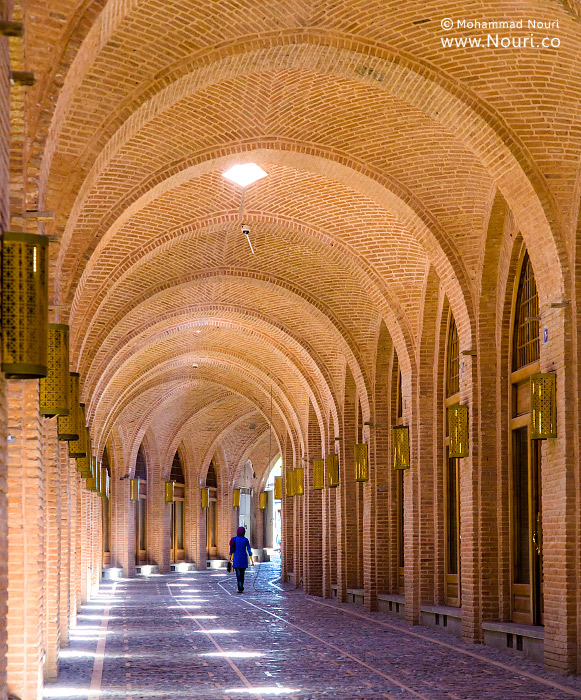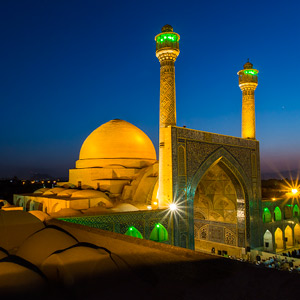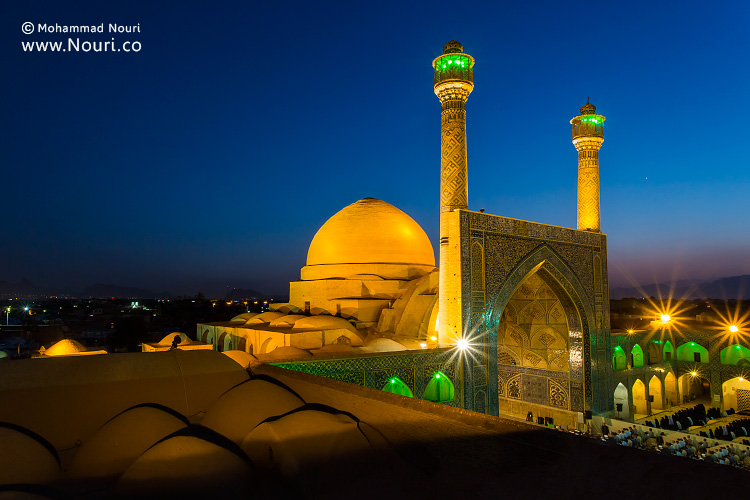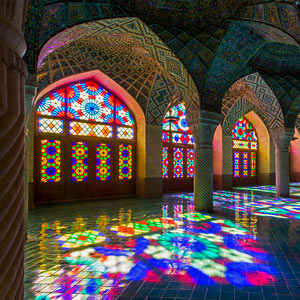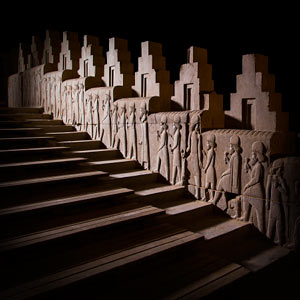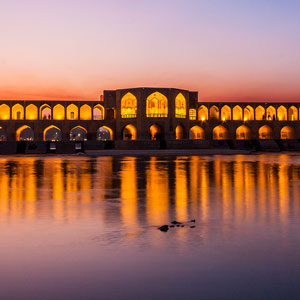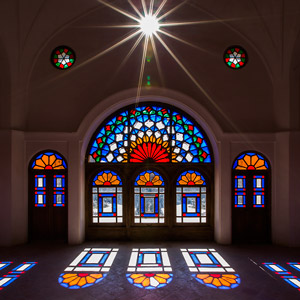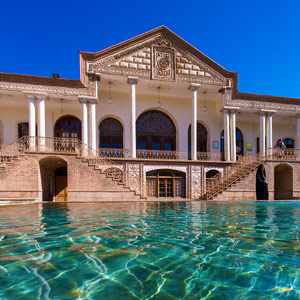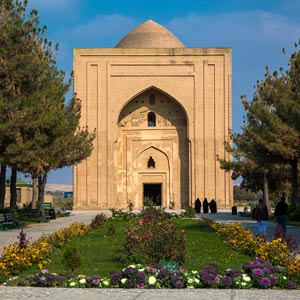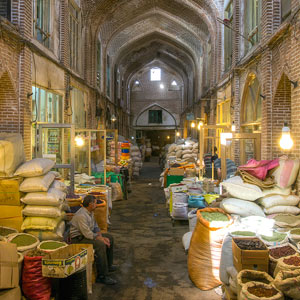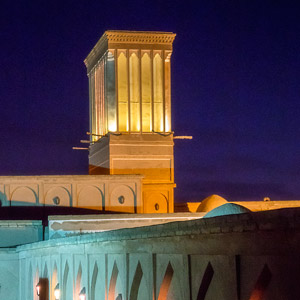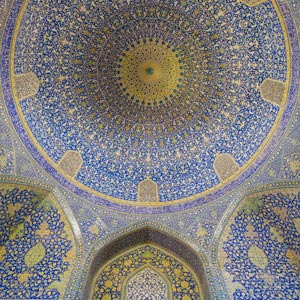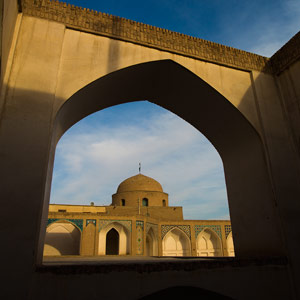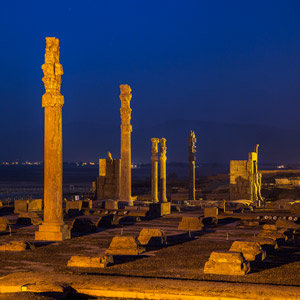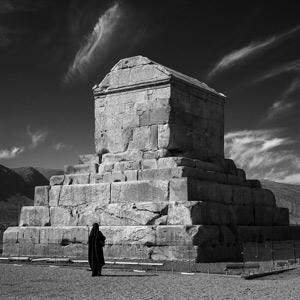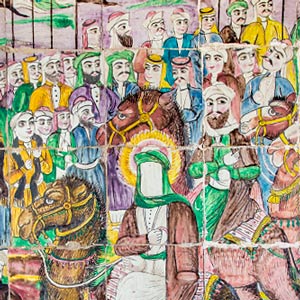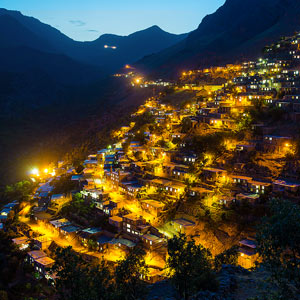Mosque of Whirling Colours
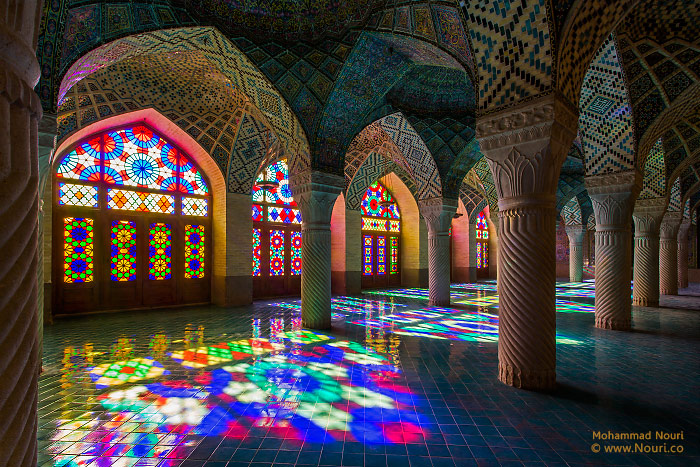 A mixture of architecture and art in Nasīr al-Mulk Mosque in Shiraz, Iran. The thing that sets this Mosque apart from the rest is when the sunlight hits it everyday. The whole inside of the building is showed with rainbow coloured lights dancing across the floor, walls and ceiling. It looks like such a magical place that is perfect for prayer. Not only do the stained glass windows give off an incredible display, but the thousands of painted tiles in the mosque are filled with color. The mosque's construction began in 1876 and was completed in 1888.
A mixture of architecture and art in Nasīr al-Mulk Mosque in Shiraz, Iran. The thing that sets this Mosque apart from the rest is when the sunlight hits it everyday. The whole inside of the building is showed with rainbow coloured lights dancing across the floor, walls and ceiling. It looks like such a magical place that is perfect for prayer. Not only do the stained glass windows give off an incredible display, but the thousands of painted tiles in the mosque are filled with color. The mosque's construction began in 1876 and was completed in 1888.
Persian Nobles
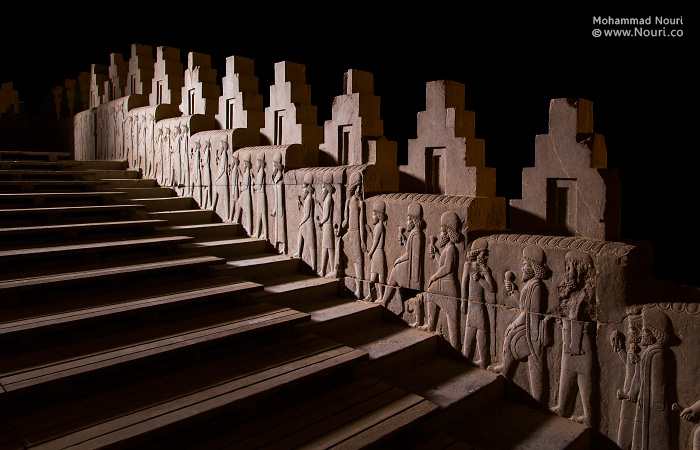 Persian nobles ascending stairs to the Tripylon hall may signal fraternity among the empire's elites. This is a stone relief for more than 2,500 years ago at Persepolis in Iran.
Persian nobles ascending stairs to the Tripylon hall may signal fraternity among the empire's elites. This is a stone relief for more than 2,500 years ago at Persepolis in Iran.
Old Bridge of Isfahan
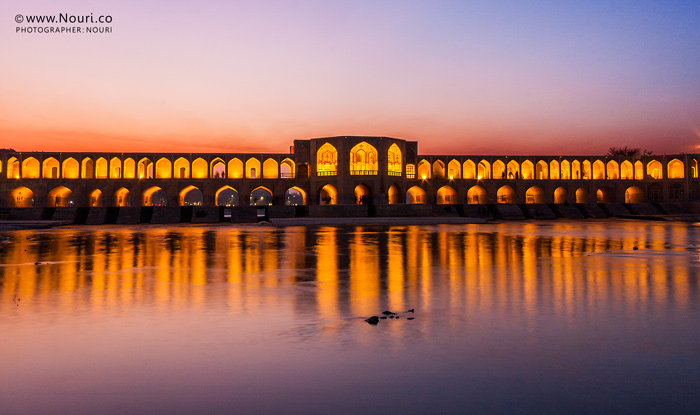 The Khaju Bridge is one of the most famous historical structures built over the zayanderud river in isfahan. It was built by the Persian Safavid king, Shah Abbas II around 1650. Khaju Bridge has 24 arches and 133 metres long and 12 metres wide. The pass way of the bridge is 7.5 meters wide, made of bricks and stones.
The Khaju Bridge is one of the most famous historical structures built over the zayanderud river in isfahan. It was built by the Persian Safavid king, Shah Abbas II around 1650. Khaju Bridge has 24 arches and 133 metres long and 12 metres wide. The pass way of the bridge is 7.5 meters wide, made of bricks and stones.
Amazing Persian Architecture
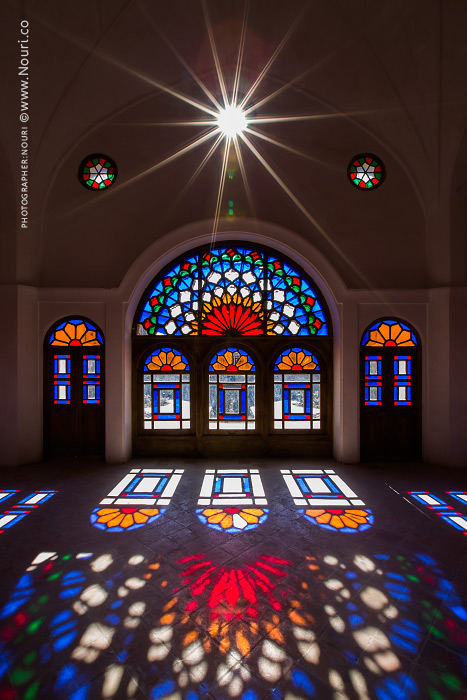
The Tabatabaei House is a historic house in Kashan, Iran. It was built in early 1880s. It consists of four courtyards, wall paintings with elegant stained glass windows, and includes other classic features of traditional Persian residential architecture.
Constitution House of Tabriz
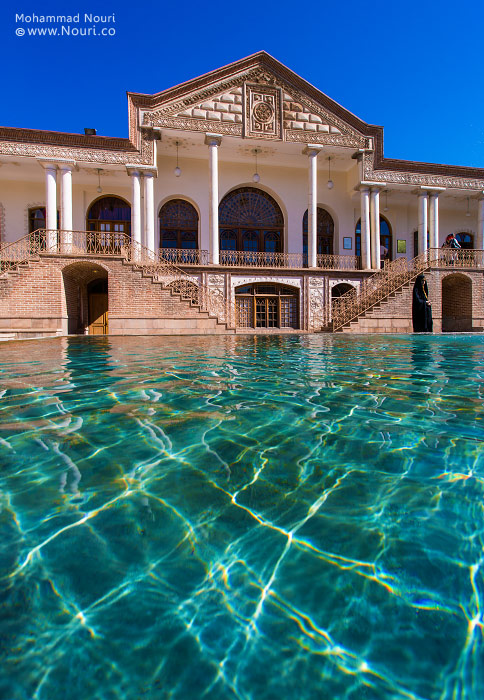 Constitution House of Tabriz, also known as Khaneh Mashrouteh is a historical edifice located in Tabriz, Iran. The two story building was constructed in 1868. It has numerous rooms and halls. The most beautiful part of the house is a skylight and corridor decorated with colorful glass and mirrors. During the years which led to Constitutional Revolution and afterwards the house was used as a gathering place of the leaders, activists and sympathizers of the movement.
Constitution House of Tabriz, also known as Khaneh Mashrouteh is a historical edifice located in Tabriz, Iran. The two story building was constructed in 1868. It has numerous rooms and halls. The most beautiful part of the house is a skylight and corridor decorated with colorful glass and mirrors. During the years which led to Constitutional Revolution and afterwards the house was used as a gathering place of the leaders, activists and sympathizers of the movement.
Haruniyeh
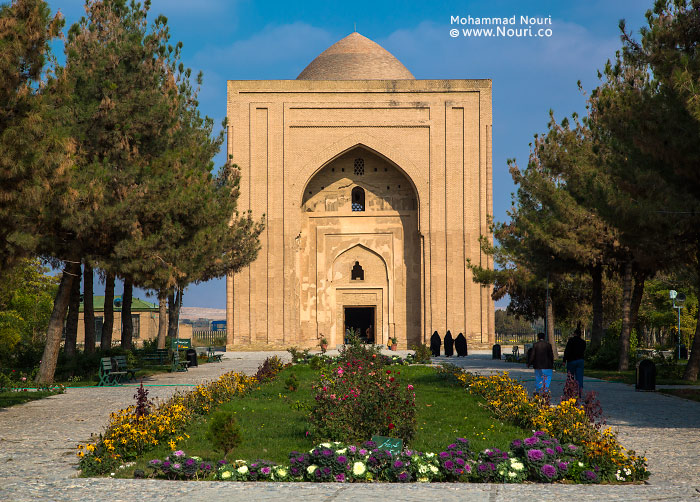 Haruniyeh, The mausoleum of Imam Muhammad Ghazali is located in Tus, Khorasan Province, Iran.
Haruniyeh, The mausoleum of Imam Muhammad Ghazali is located in Tus, Khorasan Province, Iran.
The Bazaar of Tabriz
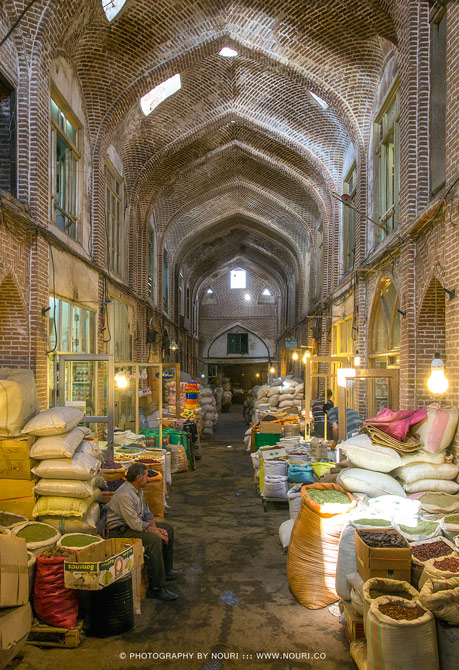 The Bazaar of Tabriz is a historical market situated in the middle of Tabriz, Iran. It is one of the oldest bazaars in the Middle East and the largest covered bazaar in the world. and is one of Iran's UNESCO World Heritage Sites.
The Bazaar of Tabriz is a historical market situated in the middle of Tabriz, Iran. It is one of the oldest bazaars in the Middle East and the largest covered bazaar in the world. and is one of Iran's UNESCO World Heritage Sites.
Traditional Cooling System
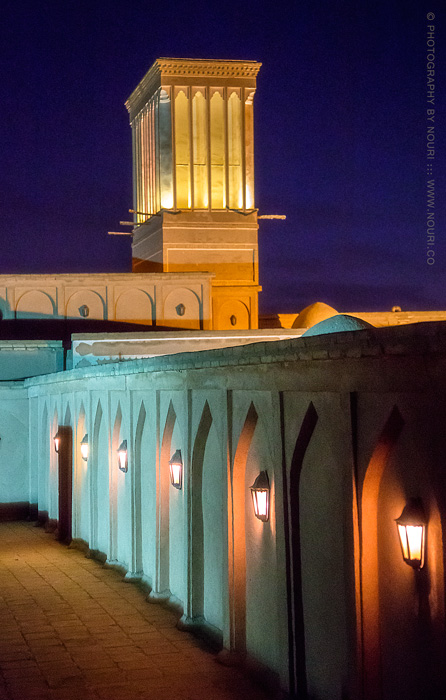 A windcatcher is a traditional Persian architectural element to create natural ventilation in buildings. Windcatchers remain present in many countries and can be found in traditional Persian-influenced architecture throughout the Middle East. Windcatchers tend to have one, four, or eight openings. In the city of Yazd, all windcatchers are four- or eight-sided.
A windcatcher is a traditional Persian architectural element to create natural ventilation in buildings. Windcatchers remain present in many countries and can be found in traditional Persian-influenced architecture throughout the Middle East. Windcatchers tend to have one, four, or eight openings. In the city of Yazd, all windcatchers are four- or eight-sided.
Under the Amazing Dome
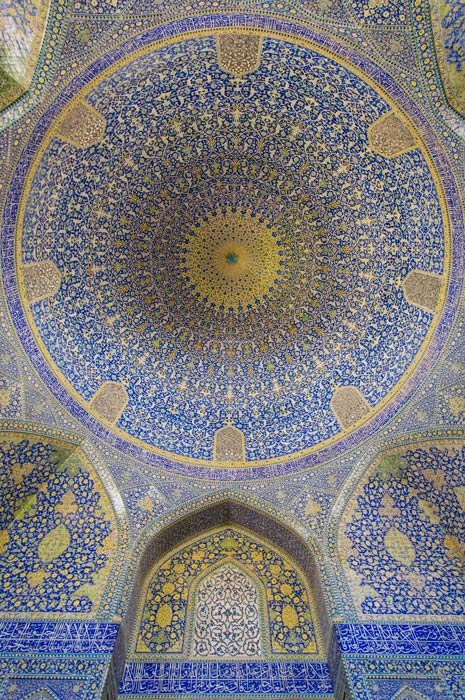
The interior view of the Shah Mosque dome in Isfahan, Iran. Reaching 53 meters in height, the dome of the Shah Mosque would become the tallest in the city when it was finished in 1629. It was built as a double-shelled dome, with 14 meters spanning between the two layers, and resting on an octagonal dome chamber. Its construction began in 1611 and Its splendor is mainly due to the beauty of its seven-colour mosaic tiles and calligraphic inscriptions. It is an excellent example of Islamic architecture of Iran, and regarded as one of the masterpieces of Persian Architecture. It is registered, along with the Naghsh-e Jahan Square, as a UNESCO World Heritage Site.
The Play of Light and Shadow
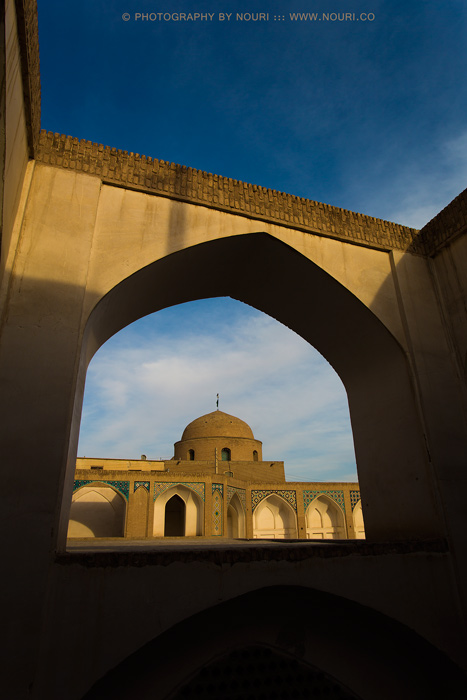 The Islamic architects first utilized these native architects to build mosques, and eventually developed their own adaptations. Islamic architecture thus is directly related to Persian and Byzantine architecture.
The Islamic architects first utilized these native architects to build mosques, and eventually developed their own adaptations. Islamic architecture thus is directly related to Persian and Byzantine architecture.
Archaeological Site of Persepolis

Here is the archaeological site Persepolis (ca. 550–330 BC) in southern Iran, an ancient capital of the Persian Empire that was burned down after being conquered by Alexander. It exemplifies the Achaemenid style of architecture. UNESCO declared the citadel of Persepolis a World Heritage Site in 1979.
Tomb of Cyrus
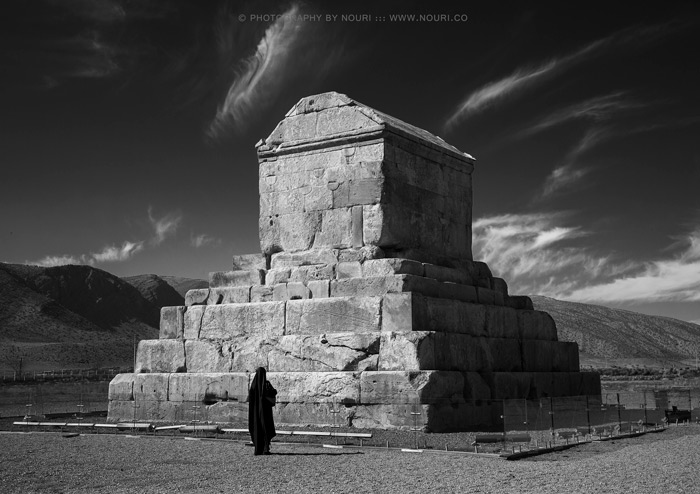 This is the tomb of Cyrus the Great (ca 559 to 530 B.C), the first Persian emperor. Admired as an early champion of human rights, Cyrus allowed religious diversity and respected the local customs of those he conquered. The tomb is located in Iran, at the Pasargadae World Heritage Site. The Achaemenid or First Persian Empire, was an empire based in Western Asia in Iran, founded in the 6th century BC by Cyrus the Great.
This is the tomb of Cyrus the Great (ca 559 to 530 B.C), the first Persian emperor. Admired as an early champion of human rights, Cyrus allowed religious diversity and respected the local customs of those he conquered. The tomb is located in Iran, at the Pasargadae World Heritage Site. The Achaemenid or First Persian Empire, was an empire based in Western Asia in Iran, founded in the 6th century BC by Cyrus the Great.
Dramatic Tile Mosaic Panels
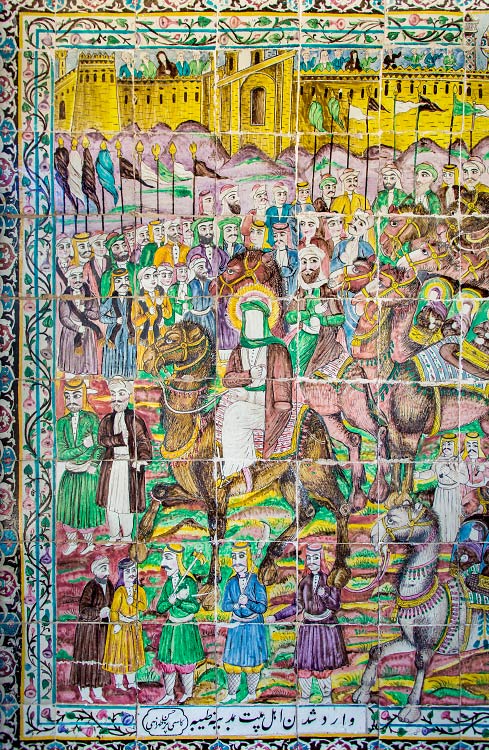
Most of the walls in Moaven-almolk Mosque are heavily decorated with tile-work. The mosque built in 1897 in Kermanshah, Iran. The structure is known for its dramatic and colorful tile mosaic panels, which depict religious stories and their principal religious, historical, and political protagonists.
Ancient Stepped Village
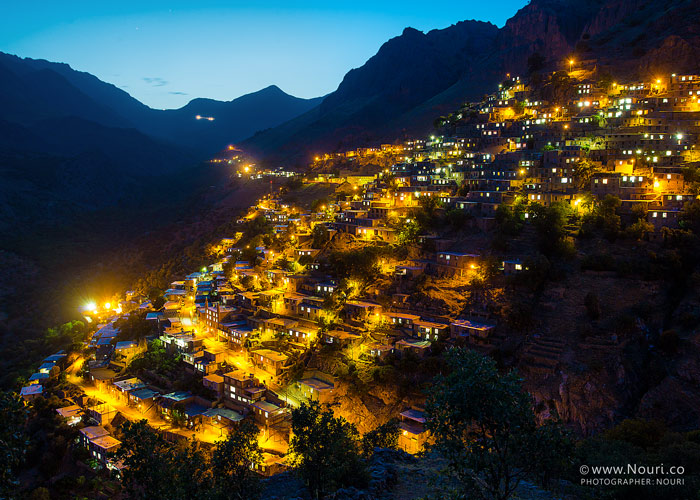 Hawraman is a mountainous region located within the provinces of Kurdistan in western Iran and is best known for its unique arrangement of cities and villages built along the mountain slopes of the region. Some scholars believe that the name Hawraman or Huraman has strong connections to the ancient Zoroastrian faith and claim that the name may have originated from Ahuraman or Ahura Mazda. Ahura Mazda is the name of God in the ancient Indo-Iranian Avestan language.
Hawraman is a mountainous region located within the provinces of Kurdistan in western Iran and is best known for its unique arrangement of cities and villages built along the mountain slopes of the region. Some scholars believe that the name Hawraman or Huraman has strong connections to the ancient Zoroastrian faith and claim that the name may have originated from Ahuraman or Ahura Mazda. Ahura Mazda is the name of God in the ancient Indo-Iranian Avestan language.
